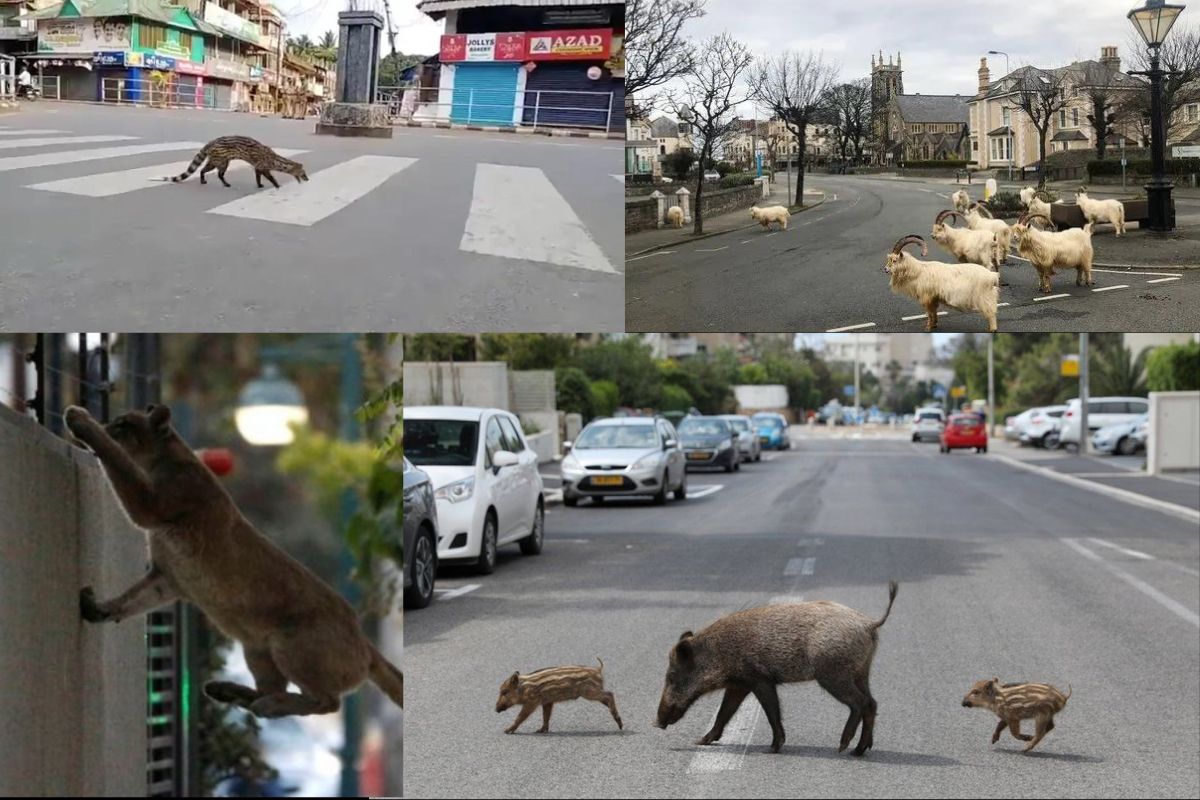Double-edged
In the midst of a global pandemic and economic uncertainty, India has witnessed an unprecedented surge in retail investors flocking to the stock market.
This pandemic showed us how one does not require to extensively work towards capturing animals to protect them but give them a chance to live free and give them that environment by not taking over the flora and fauna where they inhibit.

World Nature Conservation Day: Are humans the bane for the nature.? Perhaps. At least that is what we realised during the lockdowns due to covid 19 pandemic. The nature came to the fore when the world went for Anthropause.
Roads, bereft of the humans were replaced by the sounds and sight of wild animals. Social media was abuzz with the pictures of wild animals like boars, deer and Nilgai walk past the house porch, while some simply wandered on the roads.
Anthropause, the limited human activity had a huge impact on nature and wildlife. While some spotted the dugong, also known as sea cow, which are told to be a vulnerable species at the The Hat Chao Mai National Park, others recorded wild goats in their gardens eating their flowers and plants
Advertisement
In absence of human activities on the roads these shy creatures showed themselves in open city spaces. Due to the warm weather in colder regions animals such as foxes or boars took the opportunity to occupy open spaces in cities due plenty of sunlight.
Population of fish increased manifold with fishing activities on hold and factories being shut. Mammals such as dolphins were spotted on the shores and surface of the water bodies. After almost seven years olive ridley turtles were shown to be mass nesting in Daylight in Odisha’s Rushikulya rookery and Gahirmatha Beach. Due to less humans in these public places these creatures took to the shores to nest. It seemed almost as if mother nature was given a chance to rejuvenate herself.
The limited tourist activity also showed how the health of some animals were being impacted to to humans. Animals such as lizards, iguanas etc which are usually seen at tourists places such as beaches were often treated and fed food items such as breads etc which were are not good for their diet. This activity got limited during the pandemic. Unfortunately not poaching activity seemed to have increased during the pandemic. Due to the loss in tourism many took to poaching in order to go by their livelihood.
This pandemic showed us how one does not require to extensively work towards capturing animals to protect them but give them a chance to live free and give them that environment by not taking over the flora and fauna where they inhibit. This pandemic also became an opportunity for researchers and scientists to understand which ares needed conservation. In a study by conservation org it was found since forests play the role in containing the virus, deforestation can lead to further transfer it to humans. Many such discoveries led to the awareness to the importance of flora and fauna This revival might have been temporary, and now that the human life is back in order there is a need to look back at this time of the pandemic and look take forward steps into respecting and conserving nature to be able to coexist with each other .
Pandemic reflected to us how, not much is needed to conserve the nature, it is just the matter of right choice for the life to exist in harmony
Advertisement